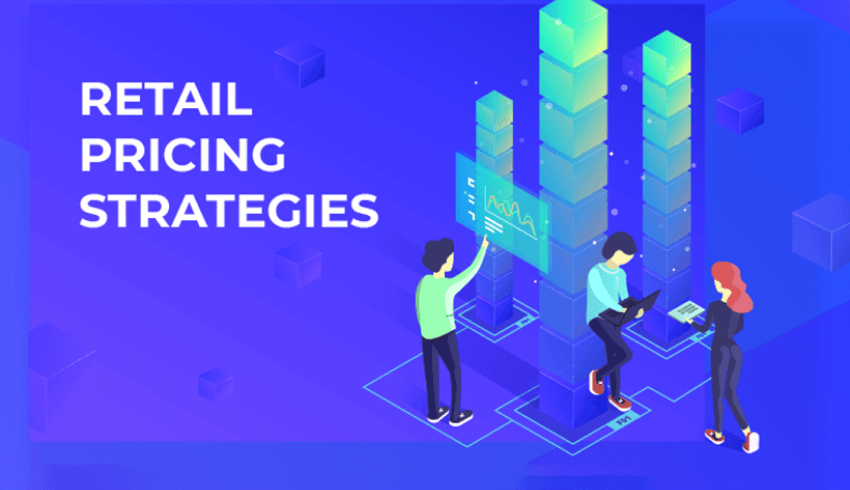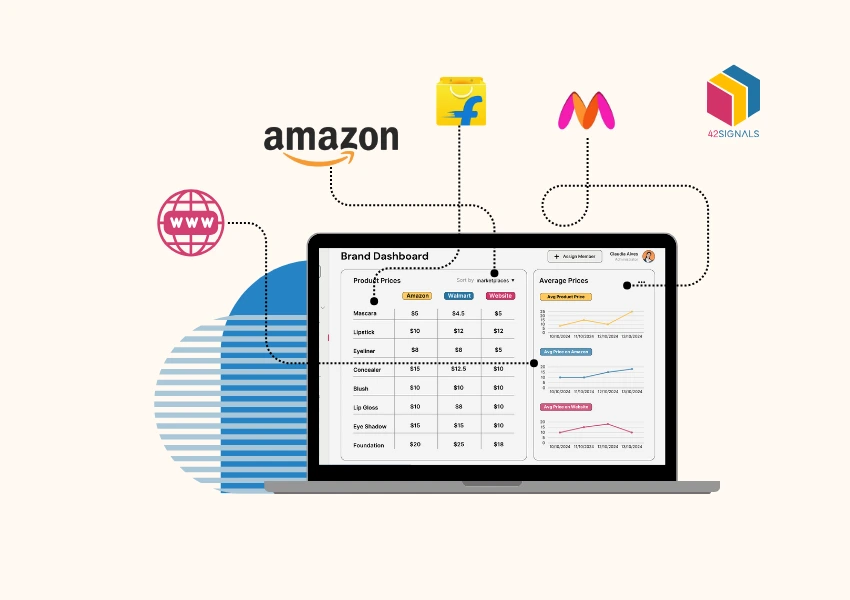In the fiercely competitive retail market, differentiation is key. But how can you stand out when everyone claims to offer the best? The secret lies in your pricing strategy – a powerful tool that, when used wisely, can make your products irresistible at first glance. 42Signals brings you a comprehensive guide on leveraging the best retail pricing strategies to not only attract attention but to turn that attention into solid sales.
Imagine a scenario where every product on your website or in your store isn’t just seen but is actively sought after by consumers. Where the decision to buy feels as natural to them as scrolling through their social feeds. This isn’t a distant dream; it’s the reality we create at 42Signals with our AI-powered ecommerce analytics solutions.
What’s Inside This Guide?
The Psychology of Pricing:
Understand the subtle cues that trigger purchase decisions. Learn why a price ending in .99 feels significantly cheaper than one rounded up by just a penny and how you can apply these insights to your pricing strategy.
Anchor and Decoy Pricing:
We’ll walk you through real-life examples where setting a higher-priced “anchor” product next to a more affordable option dramatically increases the perceived value of the latter, guiding customers towards the choice you want them to make.
Bundling for Perceived Value:
Discover how offering product bundles at a reduced price can not only clear out inventory but also increase the average order value.
Creating Urgency with Limited-Time Offers:
Learn the art of flash sales and timed discounts to create a buzz and drive immediate purchases. We’ll provide you with actionable tactics to make these offers feel like a can’t-miss event.
Dynamic Pricing Demystified:
Gain insights into how 42Signals enables you to adjust prices on the fly based on demand, competition, and other key metrics.
Value-Based Pricing Strategies:
Find out how to set prices that reflect the true value of your products to your customers.
Top Retail Pricing Strategies

#1: Psychological Pricing
Psychological pricing isn’t just about shaving a cent off a round number; it’s about tapping into the deep-rooted perceptions and biases that drive consumer behavior. When you see a price ending in .99 or .97, it’s not just a number—it’s a signal. This subtle cue triggers the “left-digit effect,” where the first digit disproportionately influences our perception of the entire price. The result? A price of just one cent less can seem substantially more affordable, enticing price-sensitive shoppers and creating a compelling illusion of value.

Source: Substack
A shopper comparing two similar products, one priced at $20 and another at $19.99. Despite the mere one-cent difference, the latter often feels significantly cheaper – a perception that can decisively sway purchasing decisions.
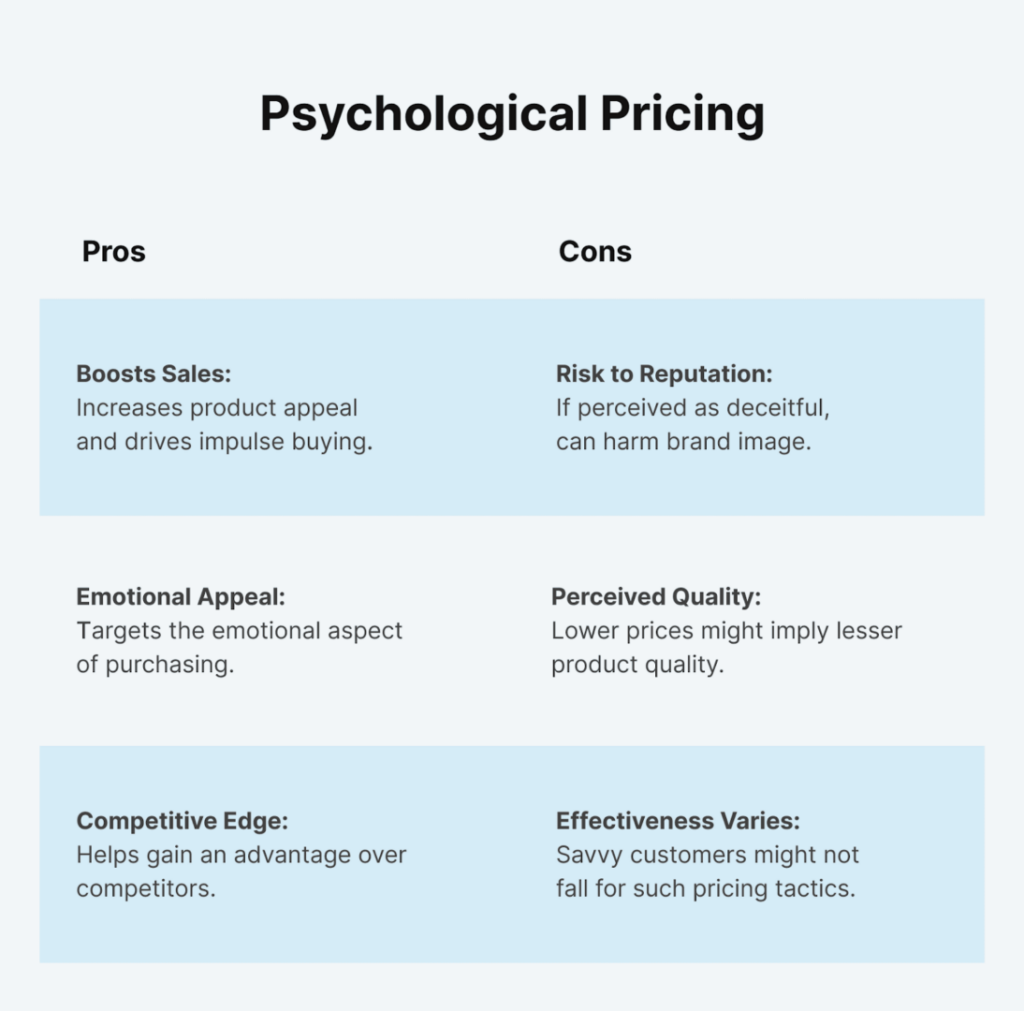
Source: Competerra
Well, you may be wondering how 42Signals helps with psychological pricing. Through analyzing customer reviews and feedback, 42Signals can provide insights into how customers perceive the value of products at different price points. This understanding allows businesses to adjust their retail pricing strategies to better match customer expectations and enhance the perceived value of their offerings.
#2: Dynamic Pricing
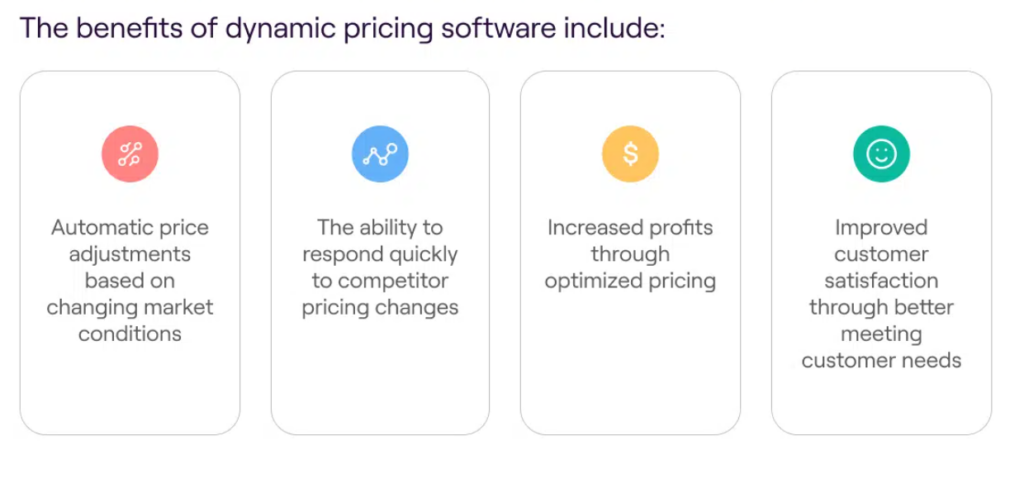
Source: Deal Hub
Dynamic pricing is the art of adjusting prices in real time to reflect changes in the market environment. It’s about being agile, responsive, and intelligent in pricing strategies to capitalize on market opportunities and navigate challenges. Dynamic pricing is driven by a deep understanding of market dynamics, competitor actions, consumer behavior, and the intrinsic value of products and services offered.
In this pricing approach, several factors are scored and weighted, typically across these four dimensions:

Source: Mckinsey
- Consumer demand (price elasticity, price perception, and basket-building power or attachment rates)
- Competition (store or zone rules, price gap to competition, and market-share trend)
- Economics (target retail margin and cost pass-through rate)
- Category dynamics (inventory levels, markdown effectiveness, and out-of-stock impact)
The foundation of dynamic pricing is data. It encompasses market trends, competitor prices, consumer demand, and even external variables such as seasonality and economic indicators.
#3: Competition-Based Pricing

Source: Keep It Simple
Competition-based pricing emerges as a sophisticated strategy, requiring a nuanced understanding of the market and a proactive approach to pricing decisions. This strategy not only considers the cost and value of products but also closely aligns prices with those of competitors to capture and retain market share.
Competition-based pricing is not merely about undercutting competitors. It’s an intricate balance of positioning your offerings attractively in the market while ensuring sustainable profit margins. The core of this strategy lies in understanding price elasticity—how sensitive your customers are to changes in price and how these changes impact demand for your products.

#4: Discount-Pricing Strategy
High-low pricing is commonly used by retail firms that sell seasonal items or products that change often, such as clothing, decor, and furniture. What makes a high/low retail pricing strategy appealing to sellers? Consumers enjoy anticipating sales and discounts, hence why Black Friday and other universal discount days are so popular.
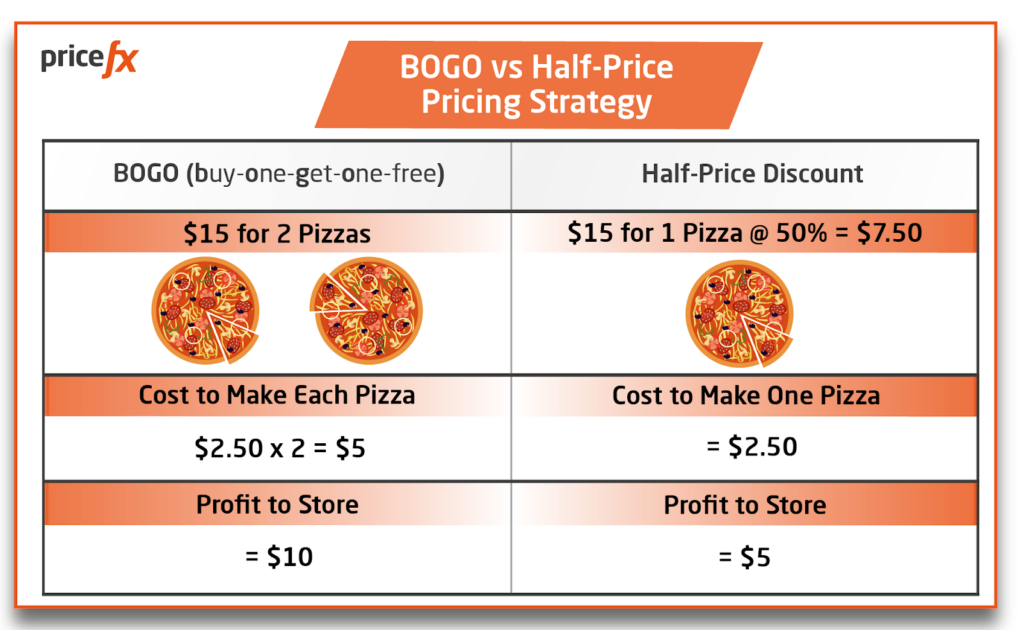
Source: Pricefy
By strategically lowering prices for a limited time or on select products, businesses can stimulate demand, attract price-sensitive shoppers, and encourage bulk purchases. The key to success lies in identifying the right products for discounts, timing promotions to coincide with customer buying cycles, and setting discount levels that make customers feel they are receiving exceptional value without eroding the perceived quality of the brand.
#5: Customer Sentiment Based Pricing
Imagine sentiment analysis as a smart assistant that sifts through all the customer reviews, comments, and ratings your business receives online. It’s like having a detective on your team who can read between the lines of what customers are saying, picking up on their happy, frustrated, or indifferent tones to give you a clear picture of how your business is doing.
By paying attention to this feedback, businesses can make smarter decisions. If customers love a particular feature of your product, you know to keep it and maybe even highlight it more. If they’re consistently unhappy about something, it’s a signal that it’s time for a change. This ongoing loop of listening and improving, based on sentiment analysis, helps businesses stay aligned with their customers’ needs and expectations, leading to better products, happier customers, and a stronger position in the market.
Sentiment analysis directly informs retail pricing strategies by providing businesses with insights into how customers perceive the value of their products and services. This connection is crucial for adjusting pricing to match customer expectations and market demand.
Through analyzing customer feedback, businesses can identify segments of their market that are particularly price-sensitive. This information is invaluable for segmenting your pricing strategy, perhaps by offering discounts to price-sensitive customers while maintaining higher price points for those less affected by price.
By integrating sentiment analysis into your retail pricing strategy, you’re essentially using customer feedback as a guide to fine-tune your pricing. This ensures that your pricing not only meets your business objectives but also aligns with customer expectations and perceptions, fostering satisfaction and loyalty. In the dynamic retail environment, where customer preferences and competitive landscapes change rapidly, sentiment analysis becomes a powerful tool for making informed, customer-centric pricing decisions.
#6: Value-Based Pricing
Value-based pricing is a strategy where the price of a product or service is set primarily based on the perceived value it offers to customers, rather than on the cost of production or market competition. This approach focuses on the benefits and outcomes that the product or service delivers to consumers, aligning the price with the value perceived by the target audience.
It’s especially effective for differentiated products or services where the customer’s appreciation of value can justify a higher price point. The key to successful value-based pricing is understanding customer needs, preferences, and the value they place on different product features and benefits.

Source: Leancept
#7: Anchor Pricing

Source: Storeplum
Consider another example, a high-end electronics retailer introducing the latest smartphone model to its product lineup. To effectively utilize anchor pricing, the retailer initially sets the smartphone’s price at $999, establishing it as the premium option in the market. This price point serves as the “anchor,” creating a reference point for customers and positioning the phone as a top-tier product.
A few weeks later, the retailer introduced a special promotion, reducing the price to $899. This strategic price drop makes the smartphone appear significantly more affordable compared to the initial anchor price, enhancing its attractiveness to potential buyers. Customers, having the $999 price anchored in their minds, perceive the discounted price as a great deal, increasing their likelihood of making a purchase.
#8: Bundle pricing

Source: Paddle
Bundle pricing is a strategy where businesses sell multiple products or services together at a price lower than the total cost of purchasing each item individually. This approach is particularly effective for increasing sales volume, encouraging customers to buy more than they initially intended by offering them perceived value in the bundle deal. It’s a win-win: customers feel they’re getting a bargain, and businesses boost their sales and move inventory more efficiently.
A classic example of bundle pricing can be seen in the tech industry, where a company might offer a laptop, a carrying case, and a wireless mouse as a bundled package. If purchased separately, the laptop might cost $1000, the carrying case $50, and the wireless mouse $25, totaling $1075. By offering all three items together for $1025, the retailer provides customers with a perceived saving of $50. This not only makes the deal attractive but also encourages the purchase of accessories that the customer might not have considered buying otherwise.
In Conclusion
In the vast and competitive realm of retail, crafting a pricing strategy that resonates with your target audience and drives sales is no small feat. Understanding the nuances of consumer behavior, market dynamics, and competitive landscapes is crucial for the successful implementation of these strategies. However, the complexity of today’s retail environment demands more than just insight; it requires the ability to analyze vast amounts of data and adapt strategies in real-time.
Role of 42Signals in Empowering Retailers
This is where 42Signals comes into play, offering a comprehensive ecommerce analytics solution that empowers retailers to navigate the complexities of pricing with confidence. By leveraging AI-powered analytics, 42Signals provides retailers with the actionable insights needed to:
- Monitor competitor pricing strategies and market trends in real time.
- Understand customer perceptions of value and price sensitivity.
- Optimize pricing strategies for different segments of the market.
- Implement dynamic pricing strategies that respond to market conditions.
- Tailor promotions and discounts to drive sales without eroding profit margins.
- Track MAP violations in the marketplace.
For retailers looking to stay ahead in the competitive market, integrating 42Signals into your pricing strategy development process is a strategic move. Begin by identifying which of these pricing strategies aligns most closely with your business goals and customer expectations.
Leverage 42Signals to gather and analyze the relevant data, refine your approach, and implement your chosen strategies with precision.
Contact us at sales@42signals.com to know how we can help with your retail pricing strategies.
